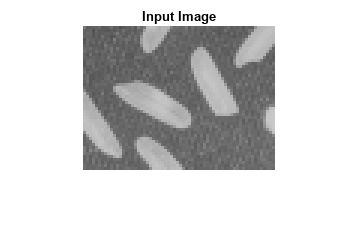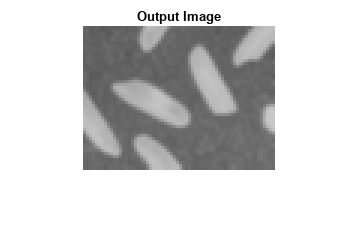visionhdl.ImageFilter
2-D FIR filtering
Description
The visionhdl.ImageFilter
System object™ performs two-dimensional finite-impulse-response (FIR) filtering on a
pixel stream. It supports the use of programmable filter coefficients.
To filter a pixel stream:
Create the
visionhdl.ImageFilterobject and set its properties.Call the object with arguments, as if it were a function.
To learn more about how System objects work, see What Are System Objects?
Creation
Description
F = visionhdl.ImageFilter(Name,Value)
returns a 2-D FIR filter System object, with the F = visionhdl.ImageFilter(coeff,lineSize,Name,Value)Coefficients property set to
coeff, the LineBufferSize property
set to lineSize, and additional options specified by one or
more Name,Value pair arguments.
Properties
Usage
Description
[
returns the next pixel, pixelout,ctrlout] = F(pixelin,ctrlin,coeff)pixelout, of the filtered image
resulting from applying the coefficients in the coeff
argument to the image described by the input pixel stream,
pixelin. The object samples the values from the
coeff argument only at the start of a frame and ignores
any changes within a frame. To enable this syntax, set the
CoefficientsSource property to 'Input
port'.
This object uses a streaming pixel interface with a structure
for frame control signals. This interface enables the object to operate independently of image
size and format and to connect with other Vision HDL Toolbox™ objects. The object accepts and returns a scalar pixel value and control signals
as a structure containing five signals. The control signals indicate the validity of each pixel
and its location in the frame. To convert a pixel matrix into a pixel stream and control
signals, use the visionhdl.FrameToPixels object. For a
description of the interface, see Streaming Pixel Interface.
Input Arguments
Output Arguments
Object Functions
To use an object function, specify the
System object as the first input argument. For
example, to release system resources of a System object named obj, use
this syntax:
release(obj)
Examples
Algorithms
This System object implements the algorithms described on the Image Filter block reference page.
Extended Capabilities
Version History
Introduced in R2015aSee Also
Image Filter | imfilter (Image Processing Toolbox) | visionhdl.FrameToPixels

